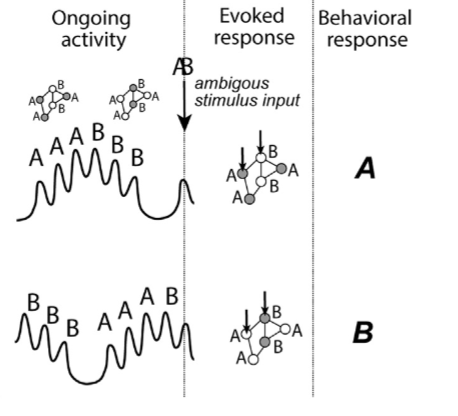Temporal coding for memory

In this research line we investigate the role of oscillations in organizing memory operations working in parallel. There has been a proposal that when you have to memorize multiple items that oscillations might sort the different items along the excitability axis of an oscillation (Lisman & Jensen, 2013).
There are a lot of open questions regarding this proposal. We would like to investigate whether the ordering is either related to the level of excitability (and thereby memory strength) of individual items? Alternatively, the phase of the coding might be related to either a specific order of external events or the exact timing. These are open question We would like to pursue further.
Relevant publications
- Ten Oever, S., Sack, A.T., Oehrn, C.R., & Axmacher, N. (2021). An engram of intentionally forgotten information. Nature communications.
- Ten Oever, S., Meierdierks, T., Duecker, F., De Graaf, T.A., & Sack, A.T. (2020). Phase-coded oscillatory ordering promotes the separation of closely matched representations to optimize perceptual discrimination. Iscience.
- Ten Oever, S., De Weerd, P., & Sack, A.T. (2020). Phase-dependent amplification of working memory content and performance. Nature communications.
- Ten Oever, S. & Sack, A.T. (2019). Interactions between rhythmic and feature predictions to create parallel time-content associations. Frontiers in neuroscience.
- Ten Oever, S., Hausfeld, L., Correia, J.M., Van Atteveldt, N., Formisano, E., & Sack, A.T. (2016). A 7T fMRI study investigating the influence of oscillatory phase on syllable representations. NeuroImage.
- Ten Oever, S. & Sack, A.T. (2015). Oscillatory phase shapes syllable perception. Proceedings of the National Academy of Sciences.